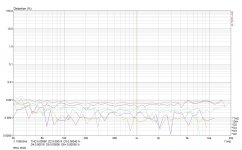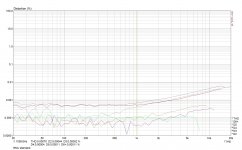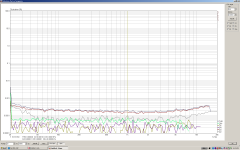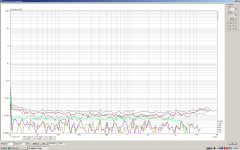I wonder... has anyone tried to interface the analog section of an ESI Juli@ to an USB chipset ? I know the opposite has been done (using the digital part of it as a pci to I2S transport).
Well, I have actually reversed the connector on a emu 1212m analog board with this in mind. But, I have only been taking the first steps. My initial thought was only using the ADC. Still some work to do.
Mogens
Stuart, just kidding.
I wasn't. This really is a pretty darn good sound card. Too bad it was discontinued.
Very informative thread. It's great to see measurements of all of these different sound cards.
Here is a link to an archive technical tests of audio interface as of 2005-2006:
https://web.archive.org/web/20050205155449/http://pcavtech.com/soundcards/compare/index.htm
I've attached measurements of my Lynx E44, using balanced connections and +20 dBu FS trim.
From that archive comes the best audio interface I have ever testted - the LynxTWO:
https://web.archive.org/web/20050207235932/http://pcavtech.com/soundcards/LynxTWO/index.htm
One odd thing about this card is that it performs far better at FS -12 dB than at FS.
One odd thing about this card is that it performs far better at FS -12 dB than at FS.
Implies analog distortion limit, I would think.
Implies analog distortion limit, I would think.
Its a feature that be turned off and on during chip setup.
I believe the idea was to have a card with optimal performance at the recording levels that are used most frequently.
Here is a link to an archive technical tests of audio interface as of 2005-2006:
Thanks for that, I remember reading this way back when.
One odd thing about this card is that it performs far better at FS -12 dB than at FS.
I noticed this while testing my old LynxTWO-A as well. If I ever get it out of storage I can give it a few runs through STEPS at different generator levels.
Speaking of generator levels, has everyone been running their STEPS tests at the default -3 dB FS? It'd be valuable to note if there are any interesting changes in distortion at different levels (e.g. -1, -3, -6, -12 dB FS) like on the LynxTWO.
Hi SY,
Which windows version do you run?
Mogens
Which windows version do you run?
Mogens
I wasn't. This really is a pretty darn good sound card. Too bad it was discontinued.
Thanks for that, I remember reading this way back when.
I noticed this while testing my old LynxTWO-A as well. If I ever get it out of storage I can give it a few runs through STEPS at different generator levels.\
I may have saved you some work:

Speaking of generator levels, has everyone been running their STEPS tests at the default -3 dB FS? It'd be valuable to note if there are any interesting changes in distortion at different levels (e.g. -1, -3, -6, -12 dB FS) like on the LynxTWO.
See above
Another PCI contender: The M-Audio AP 24192:
http://www.diyaudio.com/forums/attachment.php?attachmentid=494471&stc=1&d=1437335688
http://www.diyaudio.com/forums/attachment.php?attachmentid=494471&stc=1&d=1437335688
Attachments
I read somewhere on this forum that the EMU 0404 can't be improved by putting in better opamps and that by trying to do so you would kill the machine. So I decided to look for an opamp that might be able to work. Most likely reason earlier attempts failed, I thought, was that better opamps usually take more quiescent current, and the EMU 0404 has more than a dozen of them.
So I started looking around for a SOIC chip that might work, and found one. TI introduced not too long ago an interesting opamp which comes close in performance to the LM4562 at less than half of its energy consumption, the OPA1652. It is a JFET input opamp with only 4.5 nV/sqrt(Hz) voltage noise. On top of everything else it is pretty cheap as well.
The end result did not disappoint:

As compared to the unmodded version:

The distortion is still about double that of the Lynx, but the upward sloping distortion is completely gone.
Now, for its intended use, playing and recording music, this difference is most likely completely insignificant. Mooly started an interested thread recently http://www.diyaudio.com/forums/ever...-trying-understand-what-we-think-we-hear.html where you can find out for yourself.
But for measurements, and that is where I use it for, I am quite happy with the reduction.
So I started looking around for a SOIC chip that might work, and found one. TI introduced not too long ago an interesting opamp which comes close in performance to the LM4562 at less than half of its energy consumption, the OPA1652. It is a JFET input opamp with only 4.5 nV/sqrt(Hz) voltage noise. On top of everything else it is pretty cheap as well.
The end result did not disappoint:

As compared to the unmodded version:

The distortion is still about double that of the Lynx, but the upward sloping distortion is completely gone.
Now, for its intended use, playing and recording music, this difference is most likely completely insignificant. Mooly started an interested thread recently http://www.diyaudio.com/forums/ever...-trying-understand-what-we-think-we-hear.html where you can find out for yourself.
But for measurements, and that is where I use it for, I am quite happy with the reduction.
Hi SY,
Which windows version do you run?
Mogens
Sorry, didn't see this before. 7, 32-bit.
Those are good results. I'll get some of those chips to play with. My reference was the EMU 1616M which is a bear to open and reassemble. Miss one pin alignment and its smoked. Fortunately stock its pretty good. I may try again.
I have one or two 0404's that would benefit. How many opamps did you replace? Have you done the other mods to improve the 0404? There was something about switching noise coupled into the opamp.
I have one or two 0404's that would benefit. How many opamps did you replace? Have you done the other mods to improve the 0404? There was something about switching noise coupled into the opamp.
has anyone tested the new yamaha AG03 or AG06? YAMAHA AG03 & AG06 MIXERS | Mixdown
they are audio interfaces with mixer.
they are audio interfaces with mixer.
Demian,
There is a potential problem with the left channel because a trace runs close to a buck converter iirc, but I didn't change that. It may show op as a series of spuriae at higher frequencies.
I did change the opamps in the output, and the left input channel because that was easier to access, eight in all. I used the 1652, but in hindsight it might have been better to go for the BJT input 1662. The 1652 has pretty bad 1/f noise, with a corner @ 1kHz, and I think it shows up in the measurements. I might try the 1662 on another 0404 I have.
To get the old chips off (JRC 5532 and 2068), I found it necessary to first cut the legs off and then desolder the feet. I tried to lift off the first chip in one piece and this pulled a trace off, which I could fortunately repair.
There is a potential problem with the left channel because a trace runs close to a buck converter iirc, but I didn't change that. It may show op as a series of spuriae at higher frequencies.
I did change the opamps in the output, and the left input channel because that was easier to access, eight in all. I used the 1652, but in hindsight it might have been better to go for the BJT input 1662. The 1652 has pretty bad 1/f noise, with a corner @ 1kHz, and I think it shows up in the measurements. I might try the 1662 on another 0404 I have.
To get the old chips off (JRC 5532 and 2068), I found it necessary to first cut the legs off and then desolder the feet. I tried to lift off the first chip in one piece and this pulled a trace off, which I could fortunately repair.
So I started looking around for a SOIC chip that might work, and found one. TI introduced not too long ago an interesting opamp which comes close in performance to the LM4562 at less than half of its energy consumption, the OPA1652. It is a JFET input opamp with only 4.5 nV/sqrt(Hz) voltage noise. On top of everything else it is pretty cheap as well.
The end result did not disappoint:
View attachment 495155
As compared to the unmodded version:
View attachment 495156
The distortion is still about double that of the Lynx, but the upward sloping distortion is completely gone.
Now, for its intended use, playing and recording music, this difference is most likely completely insignificant. Mooly started an interested thread recently http://www.diyaudio.com/forums/ever...-trying-understand-what-we-think-we-hear.html where you can find out for yourself.
But for measurements, and that is where I use it for, I am quite happy with the reduction.
I wonder if that would work on an 0202 USB
That is a nice result Vacuphile. Are you playing with the USB or PCI version? I have an 0404 PCI and may try this swap out.
Figure 3 on the 1652 datasheet appears to show the 1652 as having better noise performance than the 1662?
I would be interested if you did try the 1662 on another card to see.
but in hindsight it might have been better to go for the BJT input 1662. The 1652 has pretty bad 1/f noise, with a corner @ 1kHz, and I think it shows up in the measurements. I might try the 1662 on another 0404 I have.
Figure 3 on the 1652 datasheet appears to show the 1652 as having better noise performance than the 1662?
I would be interested if you did try the 1662 on another card to see.
Last edited:
Richie, the 1/f noise corner is about the same, fig. 1. Will report back after having put my other 0404 in harms way, may be a while though.
EMU1616m mod
I would like to join the contest.. 🙂
Mainly because I think the 1616m was a bit 'under-presented' in some of the posts here.
Here are some shots from my card: 96kHz, 24bit, +4dB analog setting, -6db Fs STEPS generator setting
The second shot is the same, except the card is used more close to it's sweet point, at -9db FS generator level setting.
I have modded it, with a full set of OPA1612 (8 pieces!) for one dac/adc channel. Also some other mods, like the output muting transistors eliminated.
At lower sampling rates distortion gets even lower, as visible in the last shot, made at 48KHz.
I would like to join the contest.. 🙂
Mainly because I think the 1616m was a bit 'under-presented' in some of the posts here.
Here are some shots from my card: 96kHz, 24bit, +4dB analog setting, -6db Fs STEPS generator setting
The second shot is the same, except the card is used more close to it's sweet point, at -9db FS generator level setting.
I have modded it, with a full set of OPA1612 (8 pieces!) for one dac/adc channel. Also some other mods, like the output muting transistors eliminated.
At lower sampling rates distortion gets even lower, as visible in the last shot, made at 48KHz.
Attachments
- Status
- Not open for further replies.
- Home
- Design & Build
- Equipment & Tools
- USB vs PCIe Sound Card for audio analysis


